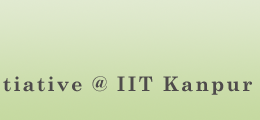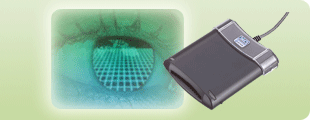|
Till a few years back a vehicle owner or a driving licence holder used to carry paper documents for Registration certificate (RC) and Driving Licence (DL). These documents were not legible, often in torn condition and were difficult to manage or comprehend at times. At the same time, the District Transport Offices were operating on a manual mode with documents and files pertaining to each vehicle and licensee's records being stored in a paper format. In the year 2000, Ministry of Road Transport and Highways, decided that in view of growing volumes, non-uniformity of documents, heterogeneity of data formats and huge cost of application software, it was important to evolve and implement standards. Driving Licence (DL). These documents were not legible, often in torn condition and were difficult to manage or comprehend at times. At the same time, the District Transport Offices were operating on a manual mode with documents and files pertaining to each vehicle and licensee's records being stored in a paper format. In the year 2000, Ministry of Road Transport and Highways, decided that in view of growing volumes, non-uniformity of documents, heterogeneity of data formats and huge cost of application software, it was important to evolve and implement standards.
An Apex committee was constituted under the chairmanship of Secretary (Road Transport and Highways) with representation from various states with a mandate to evolve common standards for data and the shape of documents to be released to citizen at large, or in other words,
- A Driving Licence (DL) and Registration Certificate (RC) to have standard data elements.
- The RC and DL should be issued in an industry standard format and media.
- These documents must be digitally signed by the DTO so that they retain their authenticity.
- These documents must be inter-operable across implementation agencies in different States/UTs in the Country.
With the above requirements in mind, the Ministry of Road Transport and Highways conceived the National Transport Project in June 2000 and the task of implementing the above with Smart Card as a uniform mode of document delivery for DL/RC was assigned to National Informatics Centre (NIC).
NIC has prepared the standard back end modules for the work flow based software and named them as SARATHI for management of driving licenses and VAHAN for managing the RCs and permits on day to day basis at the DTO level. VAHAN and SARATHI were implemented at some pilot sites in each state and once the pilot site was successful, the states replicated the same using any of their business models. During this time, the team of NIC professionals who have developed the software have conducted workshops and provided training to the Officials of the State Transport Authorities and other agencies. NIC in association with IIT, Kanpur and Industry designed and developed an operating system for the smart card which is exclusive for the country. The OS is known as Smart Card Operating System for Transport Application(SCOSTA). The Road Transport Ministry issued a Gazette Notification formalizing the SCOSTA1.0.
The Ministry also amended the Form-7 for the Driving Licence for a person and Form23-A for Registration of a Vehicle in accordance with the new developments.
Boon for the Citizens
Implementation of VAHAN and SARATHI Software products has established uniform implementation of Central Motor Vehicle Act (CMVA) 1988 and Rules (CMVR) 1989 in all the RTO across the states, which is not a minor feat, considering the size and diversity of our Country. The ICT intervention in this area has led to several benefits to the common citizens :-
- Removed various anomalies in the implementation of act and rules and has led to standardization of various coding patterns like Vehicle type, Manufacture, Registering authority, Licensing authority, Class and type of vehicles, Licencee Name, permit types etc.
- Integrated the State based specific Tax models and PSV Badge models without compromising CMVA and CMVR.
- Enabled faster clearance of cases involved in accidents or fines.
- Brought about transparency in the whole process of Licence and RC management in the country and reduced scope of discretion by the implementing officers.
- One time data entry and life time transaction processing helps faster clearance of queues at Tax payment counters for the commercial vehicles and transport licences issuing counters.
- Enabled huge amounts of recovery in terms of tax arrears.
- Simplified the system of processing requests for transactions like Change of address, duplicate, renewal or change of name in DL.
- Driving Licenses can not be issued in absentia as biometrics have been captured for every applicant.
- The Entire Data of the vehicles and the Driving Licences existing in Legacy systems have been integrated with the Standard Data Structure, wherever VAHAN and SARATHI are implemented.
- DTO can now generate several reports for standard and adhoc queries using Decision Support System(DSS) and MIS modules.
- Introduction of smart card technology has transformed DTO offices from a typical, massive paper loaded office to a more comfortable office with a desktop.
- The public gets most authentic and easy to carry, durable documents in form of smart card for DL or RC
The Road Map ahead...
- Inter connecting all The RTAs or DTAs in the State with the STAs using State Wide Area Network (SWANs) or Leased Lines to create a State Register.
- Replicating the vehicles and driving licence data available at State Registers to develop a National Register
- Provision of Anytime-Anywhere services at all DTOs within one's State without any restriction of jurisdiction
|



